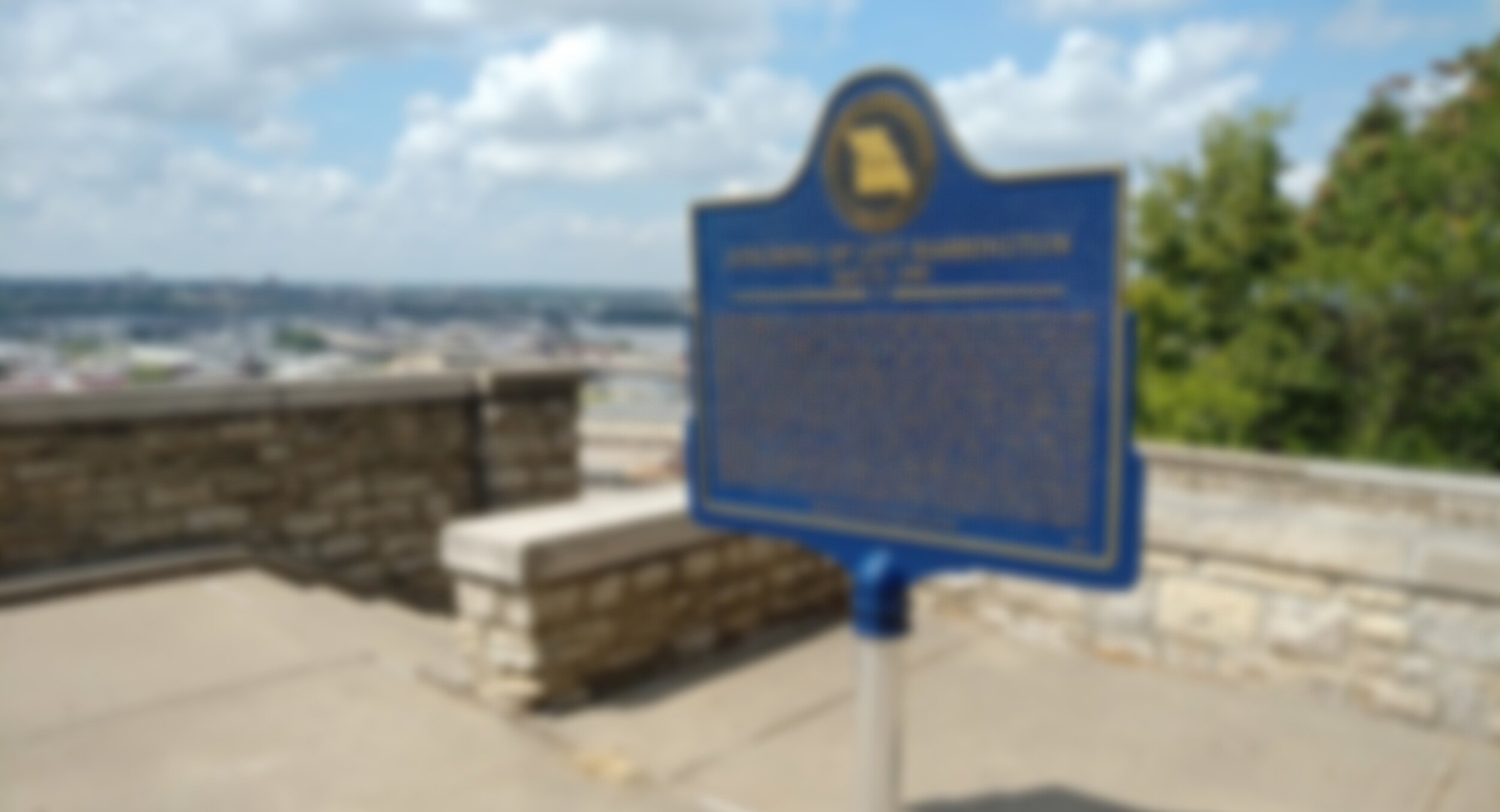
Levi Harrington Memorial Marker
1099 Summit Street
Levi Harrington Memorial Marker
*** LATEST UPDATE ON REPLACEMENT OF MARKER
High above the bluffs that surround Kansas City’s West Terrace Park lies a sobering reminder of the horrific, racial injustices those within our community have endured and of the struggles they still face today. On April 3rd, 1882, Levi Harrington’s lifeless body, riddled with bullets, swung from a steel beam on the Bluff Street Bridge. He was murdered at the hands of an angry white mob that accused him of killing Police Officer Patrick Jones. This monument serves to honor Mr. Harrington and the other 59 documented victims of lynching that occurred in Missouri from 1877 to 1950.
Prior to these tragic events, police had arrested Mr. Harrington, falsely accusing him of killing Officer Jones, who was murdered earlier that day while pursuing two male suspects accused of stealing butter from a nearby shipping yard. As they attempted to escort him to nearby police headquarters, an angry mob of at least 300 people seized Mr. Harrington from police custody, placed a rope around his neck and threw him over the side of the bridge before firing several bullets into him. Despite hundreds of witnesses, including the officers overpowered by the mob, no one was charged.
Mr. Harrington, who was only 23 years old at the time of this death. He was said to be an honorable and faithful man who worked tirelessly to support his wife, Maria, and their 5 children. He was a porter, laborer and plasters helper whose parents came to Kansas City after fleeing the racial horrors of Mississippi, presumably after being freed from slavery. The respect and admiration others had for him was reflected through the actions of the community once news spread of his tragic death. Residents came together and collected money to benefit his widow and children. J.G. Cougher, a man who employed him years earlier, made a modest contribution towards his funeral and wrote a letter to The Star urging others to do the same.
Soon after his death, it became overwhelmingly clear that Mr. Harrington played no part in the death of Officer Jones. According to a man that was with him that day, Harrington was in a nearby saloon with his father-in-law and others waiting for a political meeting to begin when the shots were fired. The true culprit, George Grant, was captured the same night the lynching took place and later confessed to the murder. In 1884, after 4 separate trials, Grant would ultimately plead guilty to manslaughter. Ultimately, he served only two years prison before being released.
As part of a national project toward truth and reconciliation to address the aftermath of lynching, the National Memorial for Peace and Justice has gathered soil from the location of Mr. Harrington’s lynching, which they have placed alongside other victims of racial terror. The monument was made possible through collaborative efforts between the Black Archives of Mid-America, the Missouri Conference of the NAACP, Missouri Faith Voices, the Equal Justice Initiative and Missourians for Alternatives to the Death Penalty. It serves to honor Mr. Harrington and all other victims of lynching while challenging us to examine the racial injustices that occur throughout our communities today.
Bibliography
“Criminalities. A Double Tragedy.” Sedan Times. April 14, 1882, Volume IV Dodd, Monroe. Kansas City Crime Central: 150 Years of Outlaws, Kidnappers, Mobsters and Their Victims. Kansas City, MO: Kansas City Star Books, 2010.
“EJI - Explore The Map,” n.d. https://lynchinginamerica.eji.org/explore.
“From Top to Bottoms: Your KC Q Answered.” Kansas City Public Library, June 7, 2019. https://kclibrary.org/blog/top-bottoms-your-kc-q-answered.
Johnson, Michelle Tyrene. “Kansas City Erects First Memorial To Remember A Victim Of Lynching,” November 20, 2018. https://www.kcur.org/post/kansas-city-erects-first-memorial-remember-victim-lynching#stream/0.
Marchant, Brent. “Kansas City, Missouri Police Officer Memorial,” n.d. https://www.kcpolicememorial.com/pages/1882_patrick_jones/.
North, Glenn. “‘Lynch Family Blues.’” YouTube. YouTube, November 17, 20017. https://www.youtube.com/watch?v=Q86ggAXvr2U.
“State vs. Grant, 76 Mo.236 (1882),” n.d. https://cite.case.law/mo/76/236/.
Content Provided by
Bradley Hocevar, student at the University of Missouri Kansas City as part of Dr. Sandra Enriquez’s Urban History Class.





